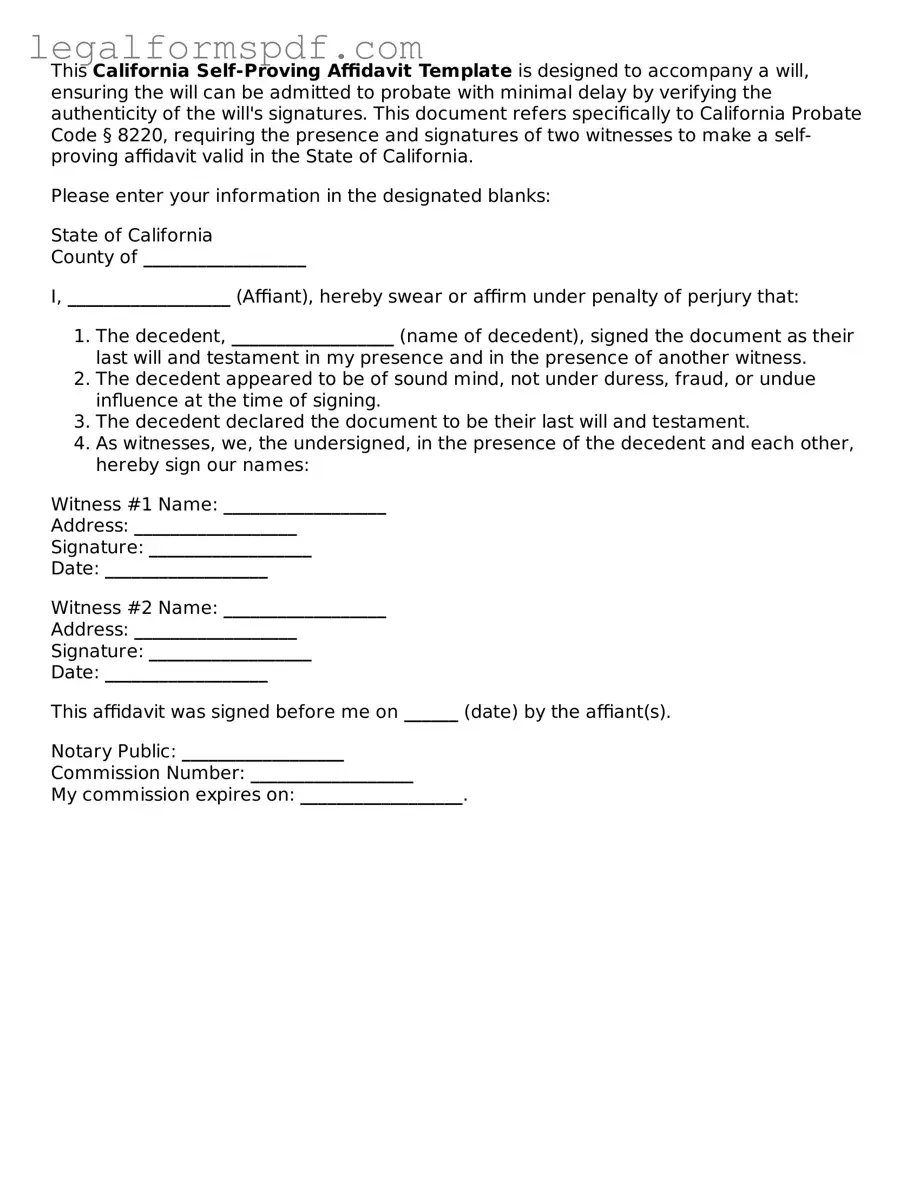What is a California Self-Proving Affidavit Form?
A California Self-Proving Affidavit Form is a document attached to a will that helps speed up the probate process after someone passes away. It's a statement, signed by witnesses, that confirms they saw the will's creator sign the document, and they believed the creator was of sound mind.
Do I need a California Self-Proving Affidavit to validate a will?
While not strictly necessary, having a Self-Proving Affidavit can make the probate process smoother and faster. It's a way to preemptively prove the authenticity of the will, reducing the need for witness testimony in court.
Who can serve as a witness on a California Self-Proving Affidavit?
Witnesses must be adults who are mentally competent and who have no vested interest in the will. This means they should not stand to inherit anything from the will. Typically, two witnesses are required.
Where do I file my California Self-Proving Affidavit?
The California Self-Proving Affidavit is usually filed alongside the will it pertains to. This means submitting it to the probate court when the time comes to settle the estate.
How do I create a California Self-Proving Affidavit?
Creating a California Self-Proving Affidavit involves drafting the document according to state laws, which includes providing specific information about the witnesses and the testamentary act. It must then be signed by the will-maker and the witnesses, often in the presence of a notary public.
Does a California Self-Proving Affidavit need to be notarized?
Yes, to make a Self-Proving Affidavit valid in California, it must be notarized. This involves having a neutral third party, a notary public, verify the identities of those signing the document and witness their signatures.
Can a Self-Proving Affidavit be added to an existing will?
Yes, you can add a Self-Proving Affidavit to an existing will. This is done by executing the affidavit according to the state’s requirements and attaching it to your current will.
What happens if I don't have a Self-Proving Affidavit in California?
Without a Self-Proving Affidavit, proving the validity of a will in California may require more time and effort. Witnesses may need to be located and brought to court to testify that they saw the will being signed, which can prolong the probate process.
Are there any drawbacks to using a Self-Proving Affidavit in California?
The primary drawback is the need for additional steps during the will's creation, including possibly incurring the cost of a notary. However, this is generally offset by the smoother and faster probate process when a Self-Proving Affidavit is used.
